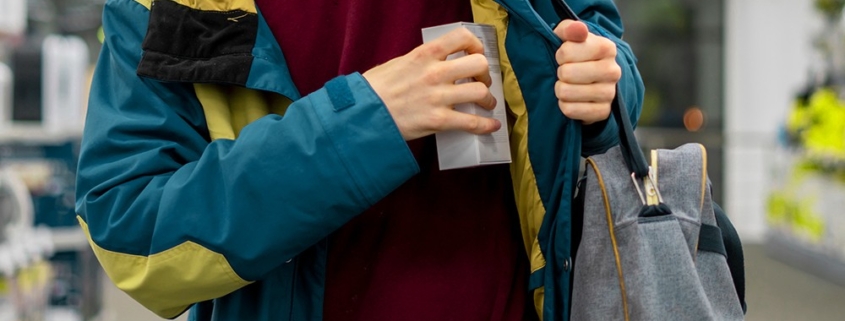5 Signs of a Shoplifter
Shoplifting is a critical problem that persists in the retail industry. It’s become such an issue that over $13 billion worth of goods are stolen each year, which equals $35 million per day. What’s even more unsettling is only one in 48 shoplifters are ever caught, with only about half ever prosecuted.
While it may be impossible to stop shoplifting entirely, there are simple yet effective ways to monitor patrons and determine if they’re stealing items. It’s important to train managers and staff on how to spot suspicious activity and report it. Here are the five most common signs of a shoplifter:
- They Loiter Inside or Outside Your Store
Shoplifters may loiter around certain areas of the store, such as the entrance or near high-value items. They may also notice surveillance blind spots and target those locations, which is something you should take into account when evaluating your store’s security measures.
Individuals tend to scope out in-store security measures and wait for a good opportunity to steal. If an employee notices someone loitering in your store, they should keep an eye on the person and make sure other staff are aware of their presence. Consider asking if they need help finding anything but be cautious. If they continue to hover, they may be waiting for the right time to shoplift.
- They Display Nervousness
Many shoplifters are petty criminals and not experienced thieves, so there’s a strong chance they’ll be a little nervous when attempting to shoplift. Shoplifters may exhibit signs of anxiety or nervousness, such as fidgeting, avoiding eye contact, avoiding cameras, sweating, etc. If you notice someone exhibiting these signs, keep an eye on them and make sure your staff is aware of their presence.
It’s an important reminder that nervousness isn’t a definite sign someone intends to steal. Some people may be feeling uncomfortable or overwhelmed in a new environment. It’s important to approach all customers with kindness and professionalism while keeping an eye out for suspicious behavior.
- They Spend a Lot of Time in Dressing Rooms
For many department and clothing stores, fitting rooms are popular targets for shoplifters, as they provide a private space to conceal stolen items. Fitting rooms also allow individuals to remove tags to avoid the electronic sensors at the entrance of most retail locations.
In some cases, shoplifters may make multiple trips to the fitting rooms but only return a few items they take inside. Keep an eye out for empty hangers or tags left in the fitting room, as these may be signs of stolen items. It’s important to have a system in place to monitor fitting rooms, such as assigning staff to check on them regularly or limiting the number of items customers can take in at one time.
- They Bring Large Bags into the Store
Customers who bring large bags into stores are a red flag for retailers. A large bag can allow shoplifters to conceal merchandise and make it easier to exit the store undetected. In some cases, shoplifters could use empty bags with the store’s logo on them to make it look like they paid for the items when leaving.
To mitigate the risk of shoplifting, stores should have a policy in place that restricts customers from bringing in large bags upon entry. Backpacks, duffle bags, and grocery bags, among others, should be discouraged inside store premises. The policy not only deters potential shoplifters but makes it easier for employees to spot suspicious behavior.
- They Work in Pairs or Groups and Try to Distract Employees
Shoplifters sometimes work in teams to distract store employees, be a lookout, or create a diversion while another person steals merchandise. They may also use their body language or behavior to distract store employees from noticing the theft taking place.
Pairs/groups are generally more dangerous because they often plan these events beforehand, and it’s a lot harder to track multiple people at once inside a store. Retailers should train their employees to recognize and respond appropriately to suspicious activity, especially when they believe multiple people are involved.
Just remember, not all pairs/groups inside a store are shoplifters. However, if you notice groups who display some of the tendencies above or see individuals attempting to distract employees, it’s reasonable to raise suspicion and keep a close eye on them.
Shoplifting Prevention with Boyd & Associates
As a retailer, preventing shoplifting is critical for maintaining profits and ensuring the safety of both customers and employees. By recognizing the signs of a potential shoplifter, retailers can take proactive measures to deter theft and protect their assets.
In addition to training employees, retailers can also partner with security companies like us to implement advanced security measures. Boyd & Associates offers a range of security services and solutions, all designed to keep your store protected. Take action to protect your business today by contacting us to learn more.
- As Retail Theft Rates Rise, Is Your Business Protected? - July 25, 2024
- Best Security Practices for Home Gun Safety - July 11, 2024
- 7 Essential Summer Safety Tips for All Ages - June 20, 2024



